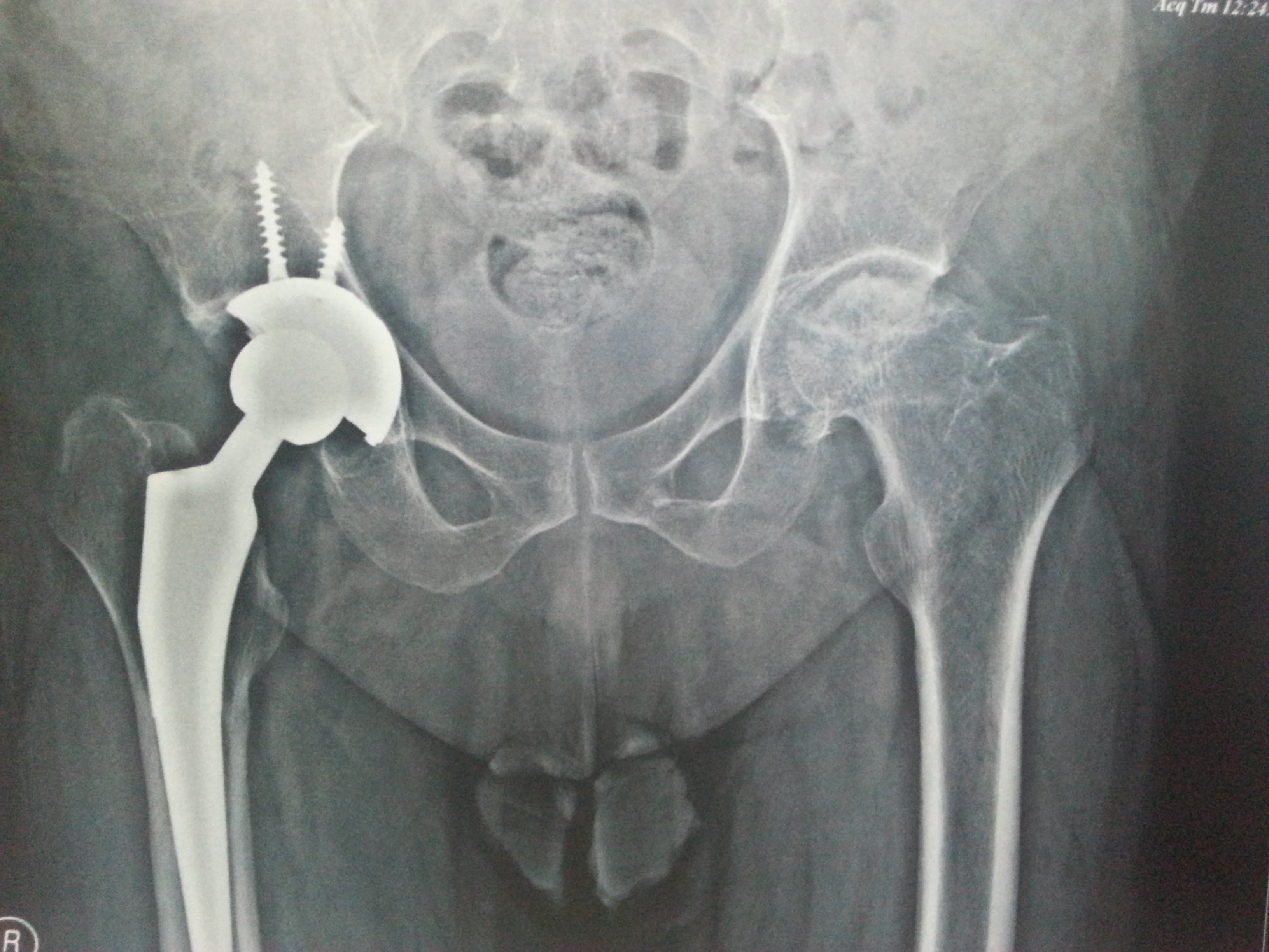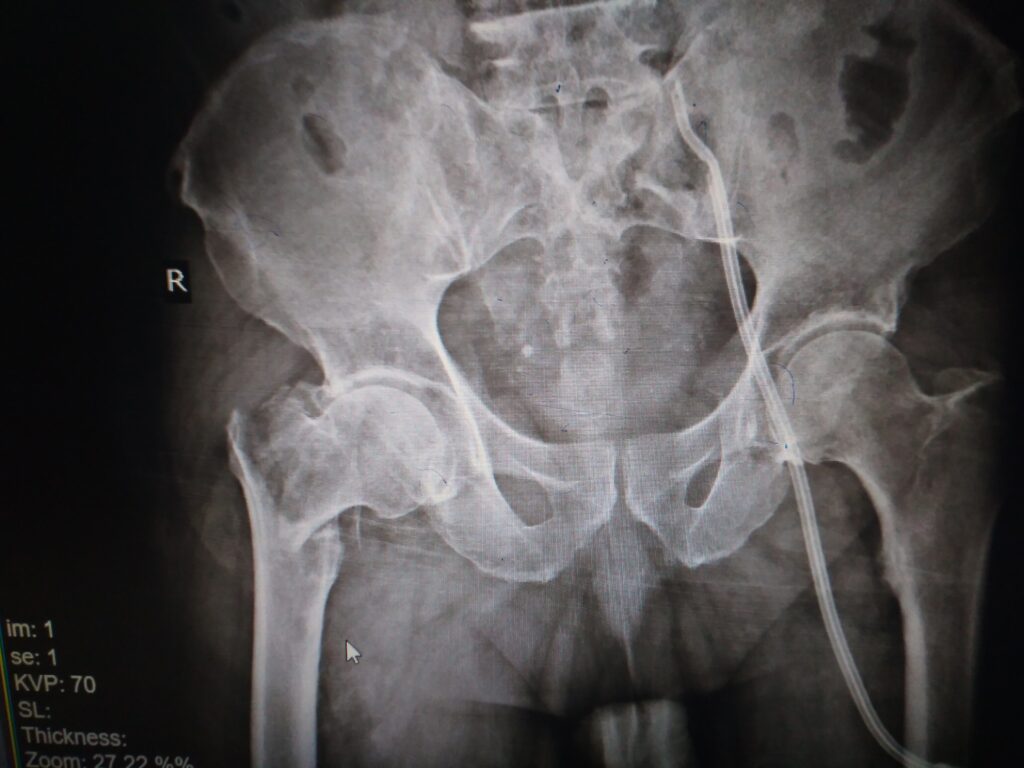A hip fracture, often abbreviated as HF, is a serious medical condition that requires immediate attention. It occurs when there is a break in the upper part of the thigh bone, also known as the femur, near the hip joint. This injury is most commonly seen in older adults, particularly those with osteoporosis or other conditions that weaken bones. However, it can also occur in younger individuals due to high-impact trauma. Understanding the causes, symptoms, diagnosis methods, and treatment options for hip fractures is crucial for ensuring timely intervention and recovery.


Causes of Hip Fractures
Hip fractures are typically caused by a combination of factors, including weakened bones, falls, and traumatic injuries. Below are some of the primary causes:
Weakened Bones
- Osteoporosis: This condition leads to a reduction in bone density, making bones more fragile and prone to breaking. Osteoporosis is especially common in postmenopausal women and older adults.
- Bone Diseases: Conditions such as cancer or Paget’s disease can weaken the structural integrity of bones, increasing the risk of fractures.
- Nutritional Deficiencies: A lack of essential nutrients like calcium and vitamin D can contribute to weaker bones over time.
Falls
- Slips and Trips: Many hip fractures occur as a result of simple falls, particularly in elderly individuals who may have impaired balance or mobility issues.
- Environmental Hazards: Uneven surfaces, poor lighting, and cluttered spaces can increase the likelihood of falling.
Trauma
- Car Accidents: High-impact collisions can cause significant force to be exerted on the hip joint, leading to fractures.
- Sports Injuries: Contact sports or activities involving sudden movements can sometimes result in hip fractures, especially in younger individuals.
Symptoms of Hip Fractures
The symptoms of a hip fracture can vary depending on the severity and location of the break. However, there are several common signs that indicate the presence of this injury:
Pain
- Hip or Groin Pain: One of the most noticeable symptoms is severe pain in the hip or groin area. The pain is often sharp and worsens with movement.
- Thigh or Knee Pain: In some cases, the pain may radiate down to the thigh or knee, even if the fracture is located in the hip.
Mobility Issues
- Inability to Walk: Many individuals with hip fractures find it difficult or impossible to bear weight on the affected leg.
- Limping: If the fracture is less severe, the person may still be able to walk but will likely limp or experience discomfort while doing so.
Physical Changes
- Swelling and Bruising: Swelling and bruising around the hip area are common indicators of a fracture.
- Shortened Leg: The injured leg may appear shorter than the other leg, and the foot may turn outward.
Diagnosis of Hip Fractures
Accurate diagnosis of a hip fracture is essential for determining the appropriate treatment plan. Healthcare providers use a combination of physical examinations and imaging tests to confirm the presence and severity of the injury.
Physical Examination
During a physical examination, the doctor will assess the patient’s symptoms, medical history, and overall condition. They will look for signs of pain, swelling, bruising, and deformities in the hip area. The doctor may also gently move the leg to evaluate the range of motion and identify any areas of tenderness.
Imaging Tests
- X-rays: X-rays are the most commonly used diagnostic tool for identifying hip fractures. They provide detailed images of the bones and can reveal the location and extent of the break.
- Magnetic Resonance Imaging: In cases where an X-ray does not clearly show a fracture, magnetic resonance imaging may be used. This test provides highly detailed images of both bones and soft tissues.
- Computed Tomography Scans: These scans are useful for assessing complex fractures or injuries that involve multiple parts of the hip joint.
Treatment Options for Hip Fractures
The treatment for a hip fracture depends on several factors, including the type and severity of the fracture, the patient’s age, overall health, and activity level. Below are the main treatment options available:
Non-Surgical Treatments
In some cases, non-surgical treatments may be sufficient to manage a hip fracture, particularly if the break is minor or if surgery poses too great a risk to the patient.
- Rest and Immobilization: For less severe fractures, the doctor may recommend bed rest and the use of crutches or a walker to avoid putting weight on the injured leg.
- Traction: Traction involves using weights and pulleys to gently align the broken bones and reduce pain. This method is typically used as a temporary measure before surgery or for patients who cannot undergo surgery.
Surgical Treatments
Surgery is often required to repair a hip fracture, especially if the break is severe or if the patient is otherwise healthy enough to tolerate the procedure. There are several surgical techniques available:
- Internal Fixation: This procedure involves inserting metal screws, plates, or rods into the bone to hold the fractured pieces together while they heal.
- Hip Replacement: In cases where the hip joint is severely damaged, a partial or total hip replacement may be necessary. During this procedure, the damaged parts of the hip are replaced with artificial components.
- Hemiarthroplasty: This is a type of partial hip replacement where only the ball portion of the hip joint is replaced with a prosthetic implant.
Rehabilitation and Physical Therapy
After surgery or non-surgical treatment, rehabilitation plays a critical role in the recovery process. Physical therapy helps restore strength, flexibility, and mobility in the affected leg. A typical rehabilitation program includes:
- Exercises: Specific exercises are designed to improve muscle strength and joint function. These may include stretching, resistance training, and balance exercises.
- Gait Training: Patients learn how to walk again using assistive devices like walkers or canes until they regain full mobility.
- Pain Management: Techniques such as heat therapy, ice packs, and medication may be used to manage pain during recovery.
Lifestyle Modifications
To prevent future fractures, patients are often encouraged to make certain lifestyle changes:
- Dietary Adjustments: Consuming foods rich in calcium and vitamin D can help strengthen bones and reduce the risk of fractures.
- Fall Prevention Strategies: Making home modifications, such as installing grab bars and improving lighting, can minimize the risk of falls.
- Regular Exercise: Engaging in low-impact activities like swimming or walking can improve bone health and overall fitness.
Complications Associated with Hip Fractures
While most people recover well from hip fractures, complications can arise, particularly in older adults. Some potential complications include:
- Blood Clots: Prolonged immobility after a hip fracture increases the risk of developing blood clots in the legs or lungs.
- Infections: Surgical procedures carry a risk of infection, which can delay healing and require additional treatment.
- Pressure Sores: Extended bed rest can lead to pressure sores, especially in individuals with limited mobility.
- Loss of Independence: Many older adults experience a decline in their ability to perform daily activities after a hip fracture, which can impact their quality of life.





